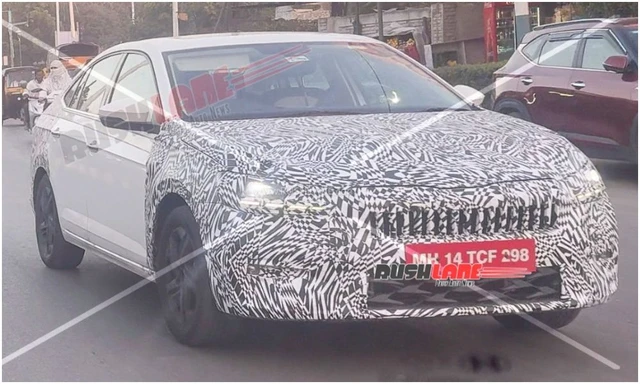How Do Fuel Cell Electric Vehicles Work Using Hydrogen?

- Electric cars are increasing in popularity since the last couple of years
- FCEVs and EVs are different from each other in a variety of aspects.
- The dimension of fuel tank determine the energy in hydrogen-storing tank
The electricity which most FCEVs use is generated through a fuel-cell which is hydrogen-powered. This differentiates the vehicle from an EV, which uses a battery to power itself. When a vehicle is designed, the manufacturing company determines the vehicle's potential and power by its electrical motor's dimensions, which receives its power from the embedded fuel cell plus battery combo.

Even though manufacturers could design and create a fuel-cell electric vehicle equipped with a plug-and-play charging option to power up the battery, the majority of such vehicles these days use their built-in battery for re-capitalizing braking power. This provides additional power during short acceleration sessions as well as smooths out the energy delivered from the vehicle's fuel cell with the added option to power off the energy-providing fuel cell in times of low power requirements. The dimensions of the fuel tank determine the total energy which could be stored inside the hydrogen-storing tank. This feature again differs from an EV, whose capacity of battery and power is directly related to its battery's dimensions.
MAIN COMPONENTS PRESENT INSIDE A HYDROGEN-FUEL-CELL POWERED ELECTRIC CAR

Many components are present inside an electric car that derives power from a hydrogen fuel cell. Let's take a closer look:
- Auxiliary Battery – Every electric car is fitted with a low-voltage battery. It is used for providing enough energy to the vehicle for it to start before the power from the traction battery comes up. It also powers other accessories in the car.
- Battery Pack – As the name suggests, the battery pack stores power generative as a result of regenerated braking. It also provides power to the traction motor.
- DC to DC Converter – This converts high voltage DC power to low voltage DC power. It is used for providing energy to accessories and charging up the auxiliary battery.
- Traction Motor – This motor takes energy from the fuel cell as well as the battery pack to power up the wheels.
- Fuel-Cell Stack – It is a collection of separate membrane electrodes which use hydrogen as well as oxygen to fill the tank.
- Fuel Filler – This is a nozzle that connects the fuel dispenser to the vehicle's receptacle and fills up the car's tank.
- Hydrogen Fuel Tank – This tank stores up hydrogen which the fuel cell needs to generate energy.
- Power Controller – This component manages the energy flow provided by other components such as fuel cells as well as a traction battery.
- Thermal Cooling System – This system creates an optimum temperature for several components.
- Electrical Transmission – This system of transmission provides mechanical power to the electric motor, which in turn drives the wheels.

These components provide the required energy to power up an electric car. In a precise and calculated manner, these components work in conjunction to make the car's functioning smooth and flawless.
Trending News
Latest News
 Jaiveer Mehra | Dec 15, 2025Mahindra XUV 7XO Interior Previewed Ahead Of Debut; Triple Screen Layout ConfirmedNew teaser video provides a glimpse at the facelift XUV 700’s cabin and confirms some of the features.1 min read
Jaiveer Mehra | Dec 15, 2025Mahindra XUV 7XO Interior Previewed Ahead Of Debut; Triple Screen Layout ConfirmedNew teaser video provides a glimpse at the facelift XUV 700’s cabin and confirms some of the features.1 min read Jaiveer Mehra | Dec 15, 20252026 MG Hector Facelift Launched At Rs 11.99 LakhThe latest facelift of MG’s SUV brings tweaks to the styling and cabin, along with a few new features.3 mins read
Jaiveer Mehra | Dec 15, 20252026 MG Hector Facelift Launched At Rs 11.99 LakhThe latest facelift of MG’s SUV brings tweaks to the styling and cabin, along with a few new features.3 mins read car&bike Team | Dec 14, 2025Top-Spec Tata Sierra Accomplished, Accomplished+ Prices RevealedRegardless of the powertrain combination chosen, all Tata Sierra Accomplished+ trims cost upwards of Rs 20 lakh (ex-showroom).2 mins read
car&bike Team | Dec 14, 2025Top-Spec Tata Sierra Accomplished, Accomplished+ Prices RevealedRegardless of the powertrain combination chosen, all Tata Sierra Accomplished+ trims cost upwards of Rs 20 lakh (ex-showroom).2 mins read car&bike Team | Dec 13, 2025Skoda Slavia Facelift Spied Testing Again Ahead Of DebutThe facelifted Slavia is expected to debut in 2026 as Skoda-VW India looks to refresh its India 2.0 range.1 min read
car&bike Team | Dec 13, 2025Skoda Slavia Facelift Spied Testing Again Ahead Of DebutThe facelifted Slavia is expected to debut in 2026 as Skoda-VW India looks to refresh its India 2.0 range.1 min read car&bike Team | Dec 13, 20252026 MG Hector Facelift Interior Previewed Ahead Of DebutLatest teaser video of the upcoming Hector facelift suggests minimal cosmetic changes to the interior as well as reveals a new alloy-wheel design.1 min read
car&bike Team | Dec 13, 20252026 MG Hector Facelift Interior Previewed Ahead Of DebutLatest teaser video of the upcoming Hector facelift suggests minimal cosmetic changes to the interior as well as reveals a new alloy-wheel design.1 min read Jaiveer Mehra | Dec 13, 2025Passenger Vehicle, Two-Wheeler Sales Surge In November 2025: SIAMBoth segments reported a growth in the region of 20 per cent, though year-to-date sales growth in FY2026 was notably flatter at around 3 per cent.1 min read
Jaiveer Mehra | Dec 13, 2025Passenger Vehicle, Two-Wheeler Sales Surge In November 2025: SIAMBoth segments reported a growth in the region of 20 per cent, though year-to-date sales growth in FY2026 was notably flatter at around 3 per cent.1 min read
 Janak Sorap | Dec 11, 2025Harley-Davidson X440 T First Ride Review: Smarter and SharperHarley-Davidson has taken the X440 and given it a more focused and engaging twist. The result is the X440 T—essentially the same platform but updated in areas that give the motorcycle more appeal and riders more thrill.5 mins read
Janak Sorap | Dec 11, 2025Harley-Davidson X440 T First Ride Review: Smarter and SharperHarley-Davidson has taken the X440 and given it a more focused and engaging twist. The result is the X440 T—essentially the same platform but updated in areas that give the motorcycle more appeal and riders more thrill.5 mins read Shams Raza Naqvi | Dec 10, 20252025 Mini Cooper Convertible Review: More Colour On Indian RoadsThe updated Mini Cooper Convertible is set to be launched in the Indian market in the next few days. We drive it around Jaisalmer for a quick review.1 min read
Shams Raza Naqvi | Dec 10, 20252025 Mini Cooper Convertible Review: More Colour On Indian RoadsThe updated Mini Cooper Convertible is set to be launched in the Indian market in the next few days. We drive it around Jaisalmer for a quick review.1 min read Bilal Firfiray | Dec 8, 2025Tata Sierra Review: India’s New Favourite?Marking its return after a few decades, the reborn Sierra has made everyone sit up and take notice. But is it worth the hype?10 mins read
Bilal Firfiray | Dec 8, 2025Tata Sierra Review: India’s New Favourite?Marking its return after a few decades, the reborn Sierra has made everyone sit up and take notice. But is it worth the hype?10 mins read Girish Karkera | Dec 4, 20252026 Honda Prelude First Drive: Domesticated Civic Type RA sporty-looking coupe built to give customers a taste of performance but not at the expense of everyday practicality.5 mins read
Girish Karkera | Dec 4, 20252026 Honda Prelude First Drive: Domesticated Civic Type RA sporty-looking coupe built to give customers a taste of performance but not at the expense of everyday practicality.5 mins read Seshan Vijayraghvan | Nov 29, 2025Mahindra XEV 9S First Drive Review: Big Electric SUV, Bigger ExpectationsThe XEV 9S lands at a time when the EV crowd is growing fast. It’s a big, born-electric, three-row SUV that starts under 20 lakh. It sits close to the XUV700 in size, but the brief is very different. Here’s what it’s like on the road.11 mins read
Seshan Vijayraghvan | Nov 29, 2025Mahindra XEV 9S First Drive Review: Big Electric SUV, Bigger ExpectationsThe XEV 9S lands at a time when the EV crowd is growing fast. It’s a big, born-electric, three-row SUV that starts under 20 lakh. It sits close to the XUV700 in size, but the brief is very different. Here’s what it’s like on the road.11 mins read

































































































































